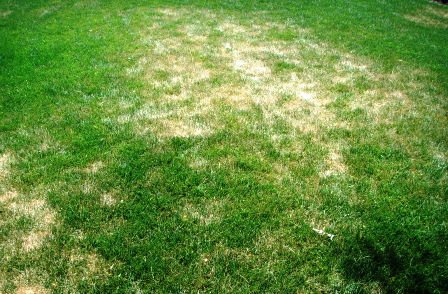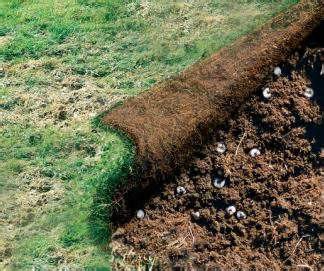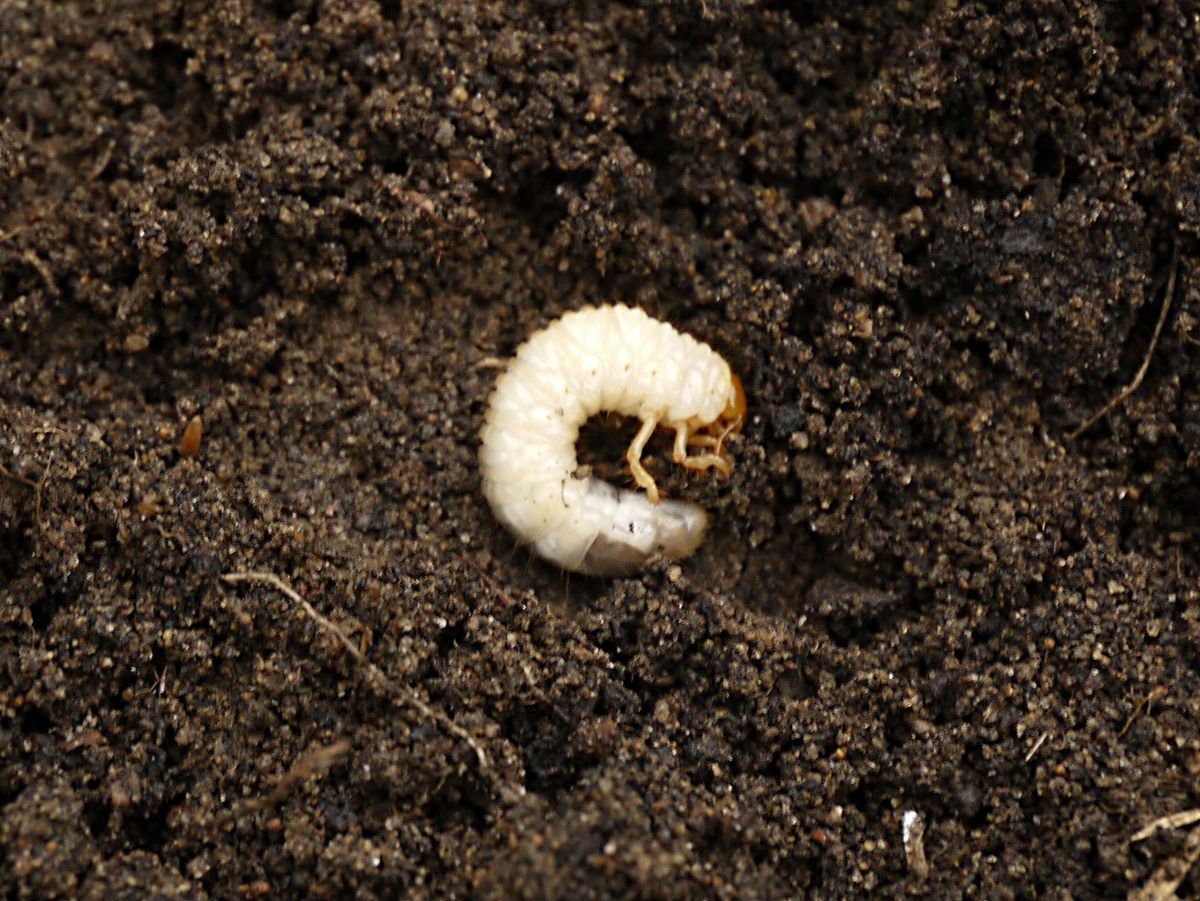Got Grubs?

What does grub damage look like?
Grub injury causes turf to turn brown in large irregular patches.

Talk about a visual-
These areas can be pulled up and rolled back like a carpet, exposing the offenders.

What do they look like?
Well, there’s nothing pretty about them, as their name suggests. They have a whitish body, brown head and most often lie in a curled position in the soil.
What causes damage?
Grubs are the larvae of scarab beetles. Several species are found in Connecticut, the most common, however are the Japanese beetle, the Asiatic garden beetle, the Oriental beetle and the European chafer. Whatever the kind, as the grub eats the grass’s roots, it damages the grass’s “anchor” allowing grass to be easily pulled out (eventually giving way to the “carpet” trick mentioned earlier).
Our intervention:
If grub populations reach an intolerable threshold, we apply a granular insecticide on the lawn during late September through early October. Rainfall increases its effectiveness, by watering-in the insecticide. Please note: Extensive damage areas often need to be repaired.
What is its lifecycle?
Adults emerge from the ground in late spring to early summer, mate and lay eggs in lawns. Grubs hatch from these eggs. In mild weather, they live one to three inches below the surface of the lawn and feed on grass roots. In the winter they move deeper as the soil surface freezes. In the early spring they move up, as the soil warms, to feed and complete their development.
If you’d like more information regarding grubs (or any other lawn or tree care problems), please contact us.
